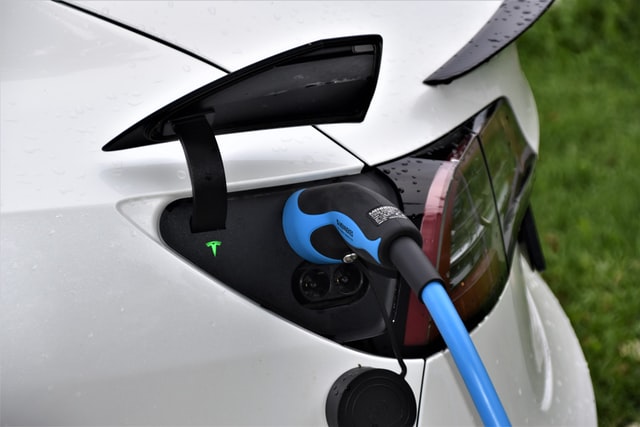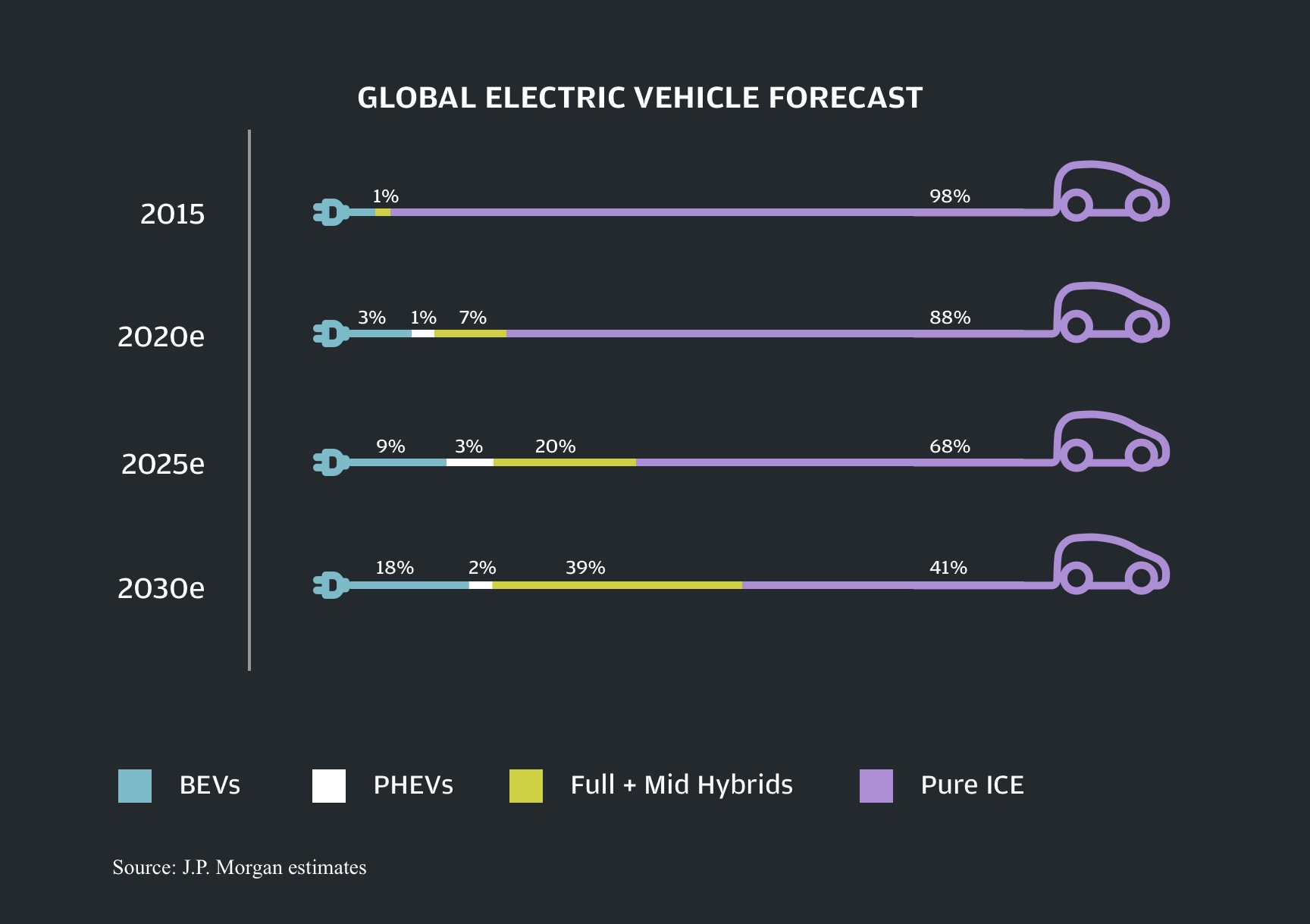
California will halt sales of new gasoline-powered cars and trucks by 2035 in a move to cut greenhouse gas emissions by 35% in the US’ most populous state.
California to end sales of new fossil-fuel-powered cars by 2035
California will halt sales of new gasoline-powered passenger cars and trucks by 2035, Gov. Gavin Newsom announced Wednesday 23 September, in a move he says will cut greenhouse gas emissions by 35% in the nation’s most populous state. The plan would not ban people from owning gas-powered cars or selling them on the used car market, but it would however end the sales of all new gasoline-powered passenger cars and trucks in the state of nearly 40 million people. "Pull away from the gas pumps," Newsom said. "Let us no longer be victims of geopolitical dictators that manipulate global supply chains and global markets." – AP

A “significant shot fired against” the internal combustion engine
California is the world’s fifth-largest economy and Californians account for more than one out of every 10 new vehicles sold in the US – market clout that means State Governor Newsom’s order could have a huge impact on the country’s auto industry and the global effort to reduce pollution and combat climate change.
California already has rules mandating a certain percentage of new car sales must be electric or zero-emission vehicles. This rule, if implemented, would make California the first US state with a plan to phase them out completely.
At least 15 other countries have already made similar commitments, including Germany, France and Norway.
Tailpipe exhaust from cars, pickups, tractor-trailer rigs and other transportation are the single largest source of air pollution. Jessica Caldwell, executive director of insights at the Edmunds.com auto pricing site, said Newsom’s announcement "does seem like this is a significant shot fired against" the internal combustion engine.
She expects the California announcement to trigger high-level meetings at all the auto companies which were moving toward electric vehicles but didn’t expect a zero-emissions mandate in 15 years. Automakers may have to rethink manufacturing and capital spending plans because of the mandate, she said.
The Alliance for Automotive Innovation, which represents most automakers including Ford, which Newsom lauded for its anti-pollution efforts, said that although the industry is committed to more electric vehicles and will work with California, markets can’t be built with mandates and bans.
CEO John Bozzella called for combined efforts involving local, state and federal governments as well as the auto industry and other businesses. "It will require increased infrastructure, incentives, fleet requirements, building codes, and much more," Bozzella said in a statement.

Plan positions California to win a new generation of jobs building affordable zero-emission vehicles
Roughly a dozen states follow California’s lead on auto emissions standards that are more restrictive than federal rules. If those states follow suit on zero-emission vehicles, it could have a huge impact on the entire US automobile industry as a whole, reported ABC13 last week.
Meanwhile, President Donald Trump wants to roll back tougher Obama-era auto emissions standards and is battling California to force it to comply.
Newsom’s order directs the California Air Resources Board to develop and approve regulations to meet the 2035 deadline. He also ordered them to make a rule requiring all medium and heavy-duty trucks be 100% zero-emission vehicles by 2045 "where feasible."
Phasing out gas and diesel-powered vehicles would mean less pollution threatening the health of Californians, said Fred Krupp, head of the Environmental Defense Fund.
It would be good for the state’s economy as well, Krupp said in a statement. "This plan positions California to win a new generation of jobs building affordable zero-emission vehicles – jobs that Europe and China are also hoping to capture," he said.
Newsom also directed state agencies to speed up development of charging stations across the state and called on the Legislature to eliminate new fracking licenses by 2024.
Fracking is a technique that allows energy companies to extract huge volumes of oil and gas from shale rock deep underground. It involves injecting high-pressure mixtures of water, sand or gravel and chemicals into rock. Fracking opponents say the chemicals involved threaten water supplies and public health.
California has a goal of relying 100% on clean, renewable energy by 2045. Gasoline and diesel-powered cars and trucks are the biggest impediment to reaching that goal as they account for more than half of the state’s carbon pollution.
The order comes as massive wildfires have burned a record 5,600 square miles (14,500 square kilometers) in California this year. Experts say the size and intensity of the fires are aided by warmer temperatures and years of drought brought on by climate change.
Source: AP/ABC13

The world is shifting gears to electric vehicles
The car industry is undergoing a radical transformation, with most carmakers agreeing the next 10 years will bring more change than the two previous decades. The next target date cited by automakers as a tipping point is 2025, when everything from materials and fuel to cost and the companies that build cars are set to look dramatically different.
In a recent report, a research team from J.P. Morgan explored the rise of the electric vehicle and what the industry will look like by 2025.
Automakers are preparing to phase out cars powered solely by internal combustion engines (ICEs) as governments look to tackle fuel emissions.
The growth in electric vehicles (EVs) and hybrid electric vehicles (HEVs) is climbing and by 2025, EVs and HEVs will account for an estimated 30% of all vehicle sales. Comparatively, in 2016 just under 1 million vehicles or 1% of global auto sales came from plug-in electric vehicles (PEVs).1
By 2025, J.P. Morgan estimates this will rise close to 8.4 million vehicles or a 7.7% market share. While this jump is significant, it doesn’t compare to the kind of growth expected in HEVs – cars that combine a fuel engine with electric elements. This sector is forecast to swell from just 3% of global market share to more than 25 million vehicles or 23% of global sales over the same period.1 This leaves pure-ICE vehicles with around 70% of the market share in 2025, with this falling to around 40% by 2030, predominantly in emerging markets.
In terms of production and sales of electric cars, no other nation comes close to China. By 2020, the country is expected to account for a staggering 59% of global sales before easing slightly to 55% by 2025 according to J.P. Morgan data.
The rise of mini-EVs with smaller battery packs designed for short-range driving (around 100-150 km) has helped boost the popularity of EVs in China.
Prices for mini-EVs start at around RMB 40,000 or $6,250 USD making them affordable. J.P. Morgan’s Research team forecasts the compound annual growth rate (CAGR) of China’s new electric vehicle (NEV) market (EVs and PHEVs) is set to hit 46% by 2020, with 2.5 million units produced that year — 25% above the government’s target of 2 million units.
Source: JPMorgan
TEN WAYS TO BE GREENER
Here are ten simple and fun things you can do at home to save energy, water and waste – for the good of your pocket and the planet.